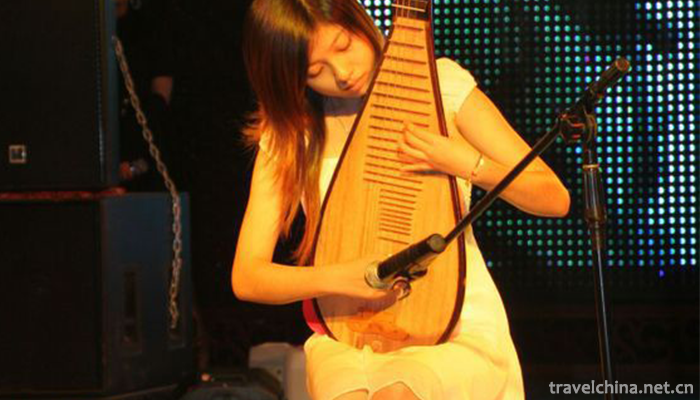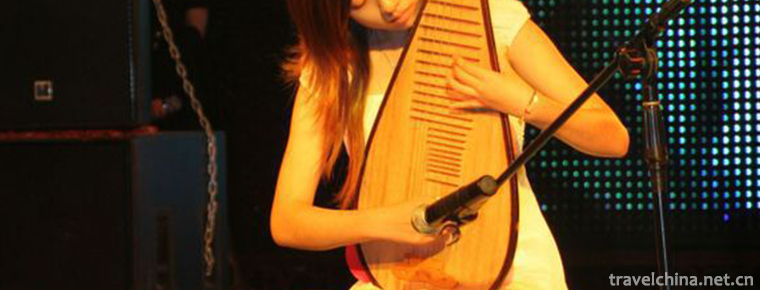Han music in Guangdong
Han music in Guangdong
Guangdong Han music is an ancient music of the Central Plains brought about by Hakka ancestors when they moved southward more than 1,000 years ago. It has evolved from generation to generation and has become one of the three major types of music in Guangdong based on the integration of local folk music (such as playing eight tones and Chinese military class music). "Zhongzhou Ancient Tune" and "Hangao Old Music Score" are old music scores handed down from generation to generation. Guangdong Hakka music generally includes five categories: silk string music (formerly Confucian or Qingyue), Chinese military class music, eight tones, folk gongs and drums, and temple music. It is widely spread in Meizhou, Shenzhen, Shaoguan, Huiyang, Fujian, Fujian, Jiangxi, Gannan, Taiwan and other Hakka areas and overseas Chinese, among which Meizhou, known as the hometown of Guangdong Hanyu, is also the representative. Meizhou Guangdong Han Music Association and Hadu Women's Guangdong Han Music Orchestra are the main institutions for the inheritance of Han music.
In 2004, Dapu County of Meizhou City was officially awarded the honorary title of "Hanle Town" by Guangdong Provincial Culture Department. In June 2006, it was listed in the first batch of national intangible cultural heritage list.
In 2010, in 2011, Guangdong Han music performances appeared successively in Guangzhou Asian Games and Shenzhen Universiade, so that the general public can appreciate the artistic style of ancient Guangdong Han music.
In October 2012, at the finals of the 2012 CCTV National Instrumental Music Television Competition, the Guangdong Han Theatre Orchestra, composed of nine musicians from the Guangdong Han Theatre, won the first place in the traditional folk music group with a Guangdong Han Music "Cuizi Dengtan". The charming style of Zhongzhou ancient music instantly shined in front of the capital and millions of audiences throughout the country.
Brief introduction of Chinese music
In the long-term spread, Han music has had a variety of appellations. Such as "national music", "Zhongzhou ancient rhyme", "Hakka music", "Waijiang string", "Han tune music", "gong advocacy", "playing eight tones" and so on. For the sake of authenticity, the first Yangcheng Concert in 1962 was formally named "Guangdong Han Music" after many musicians'discussions.
The simple, elegant and graceful music of the Han Dynasty in Guangdong, Fujian, Taiwan and other provinces and Southeast Asian Chinese are widely spread. Guangdong Han Music, Guangdong Music and Chaozhou Music are known as the three major types of music in Lingnan, each of which has its own infinite artistic charm and special style and has been handed down from generation to generation, enduring and enjoying a good reputation at home and abroad.
Inheritance significance
basic feature
After hundreds of years of development, Guangdong Han music has formed the following basic characteristics:
1. The inheritance is clear and there are many representatives in each period. Such as Luo Shuyu in Ming and Qing Dynasties, Yang Qilie in Ming Dynasty in Qianlong in Qing Dynasty in 3 years, Yang Tianpei in Qianlong in 13 years, Zhang Zhennan in Xianfeng in 2 years, Rao Jungu in Chayang Xiuchi, Xiucai in Late Qing Dynasty, and so on; He Yuzhai, Rao Shushu, Rao Congju, Rao Bichu, Li Lantian, Li Zhitian, Luo Jiuxiang and Luo Niang De in the period of the Republic of China; after the founding of the People's Republic of China, Li Deli, Luo Lian, Luo Lian, Luo Lian, Dunchang, Rao Ningxin, Luo Dezhuang, Zhang Gaowan, Luo Zengliang, Luo Zengyou, Luo Banglong, Yang Peiliu, Fan Shenghua, Zhuangchang, etc. At present, there are Rao Baoyou, Wen Ziqin, Liao Dongxiong, Liu Chuanhe and so on.
2. There are many kinds and repertoires. According to the collected and published Chinese music anthology, there are 612 pieces of Han music, including 430 pieces of silk string music (including minor), 56 pieces of Qing music, 23 pieces of Han music gongs and drums, 62 pieces of Chinese military class music and 31 pieces of temple music.
3. Diversity of performance forms and techniques. The performance of Han music has one solo, two or three accompaniments, but more forms of accompaniment, so its performance skills.
Qiao is rich. Take the ensemble for example, there are such procedures as choosing instruments, auditing sounds, testing lines, prelude and ensemble. At the same time, we should pay attention to concentration and appropriate environment. In addition, the performing skills of Han music include tone variation, adding flowers and subtracting characters.
4. Literary compatibility. The tune of Guangdong Han music contains rich literariness, the pitch of the music is high and low, the length is short and urgent, the structure of the beginning and the end, echoes the ups and downs, and contains a deep literary connotation. It can be divided into four literary genres:
One is the style of Ci and qu. The tune of this genre is divided into two parts: the front and the back parts are not equal in number, but the tune of the phrase is quite similar, such as General's Order and Xiaoyangzhou, etc.
Second, the style of wind poetry. Each piece of music in this genre is divided into four or five or seven or eight paragraphs. There are two or three sentences in each paragraph. Although the other paragraphs are different, their first or last sentences are basically the same. This kind of tune can be represented by Yulian Link.
Third, the style of Sao Fu. This genre has many dual sentences with scattered sentences, which are similar to Lisao, Return and Return Lyrics, Chibi Fu, and so on. It is similar to that of Sanchu Ci.
Fourth, prose style. This kind of music, or dual sentences, or overlapping sentences, is more complex and changeable. For example, the first paragraph of Pingshan Music is composed of a couplet sentence and a repetition sentence, while the middle paragraph is composed of a single sentence, and then two couples are used. The last paragraph is used to turn the repetition sentence, and the single sentence is closed, one bunch after another. Its style is the most neat.


-
1.Puning Temple
Puning Temple is located in Chengde City, Hebei Province. It was built in the Qianlong period of the Qing Dynasty. The first half of the temple is Han-style,
Time 2019-02-07 -
2.Zhuquan Village Tourist Resort
Zhuquan Village Resort is located in the north of Yinan County, Shandong Province, 12 kilometers away from the county. It was called Quanshangzhuang in Yuan and Ming Dynasties and was renamed Zhuquan
Time 2019-03-21 -
3.Di Shu boxing
Gejiquan is one of the rare traditional types of boxing in southern China, also known as "Gejiu Dog Method", "Dilong Quan" or "Dili Quan". It is commonly known as "D
Time 2019-04-26 -
4.Fire tiger
Fire tiger is a traditional folk dance form spread in Fengtai, Anhui Province. One of its greatest characteristics is the word "fire". Performers often wear tight, thick clothes and tie tige
Time 2019-05-05 -
5.Shatar Mongolian chess
Mongolian chess is a popular folk sports game in Inner Mongolia. Generally speaking, there are two types of Mongolian chess, one is Shatar with 8 x 8 squares on the chessboard, the other is Hayashatar
Time 2019-06-03 -
6.Mongolian Folk Songs
Mongolian folk songs are mainly divided into two categories: ritual songs and pastoral songs. Mongolian folk songs are famous for their magnificent voices and melodious tunes.
Time 2019-06-04 -
7.A tune of mountain climbing
Mountain climbing tune, also known as mountain climbing song and mountain song, is a traditional short-tune folk song popular in the agricultural and semi-agricultural and semi-pastoral areas of centr
Time 2019-06-08 -
8.Sharipol wrestling
Shaliboer style wrestling is a national traditional sports event originally created and retained by the Weilat Mongolian people. It is one of the main sports events in the Uznada Mu Grand Event in Ala
Time 2019-06-12 -
9.Legend of Su Xian
The legend of Suxian is a local folklore with a long history. Su Xian, Ming Lian, from Guiyang. Su Da lost his father in his early years and depended on his mother for his life. One year, the plague w
Time 2019-06-17 -
10.Sibo Belem Dance
"Bailun" dance is the generic name of Xibo self-entertainment dance and the first type of Xibo folk dance. It originated from an ancient dance that imitated life and production posture in th
Time 2019-07-01 -
11.Liubeichi Park
Liubeichi park is located at No.4 Minjiang East Road, Yibin City, with an area of 238.18 mu. It is a national AAAA tourist attraction. It is a famous scenic spot and a key Park in Sichuan Province.
Time 2020-10-16 -
12.Social undertakings in Mianyang
In 2018, Mianyang City applied for provincial science and technology projects and implemented 132 million yuan of free funds. There are 272 high-tech enterprises in the city, including 5 national engineering technology research centers and 19 provincial
Time 2020-12-14